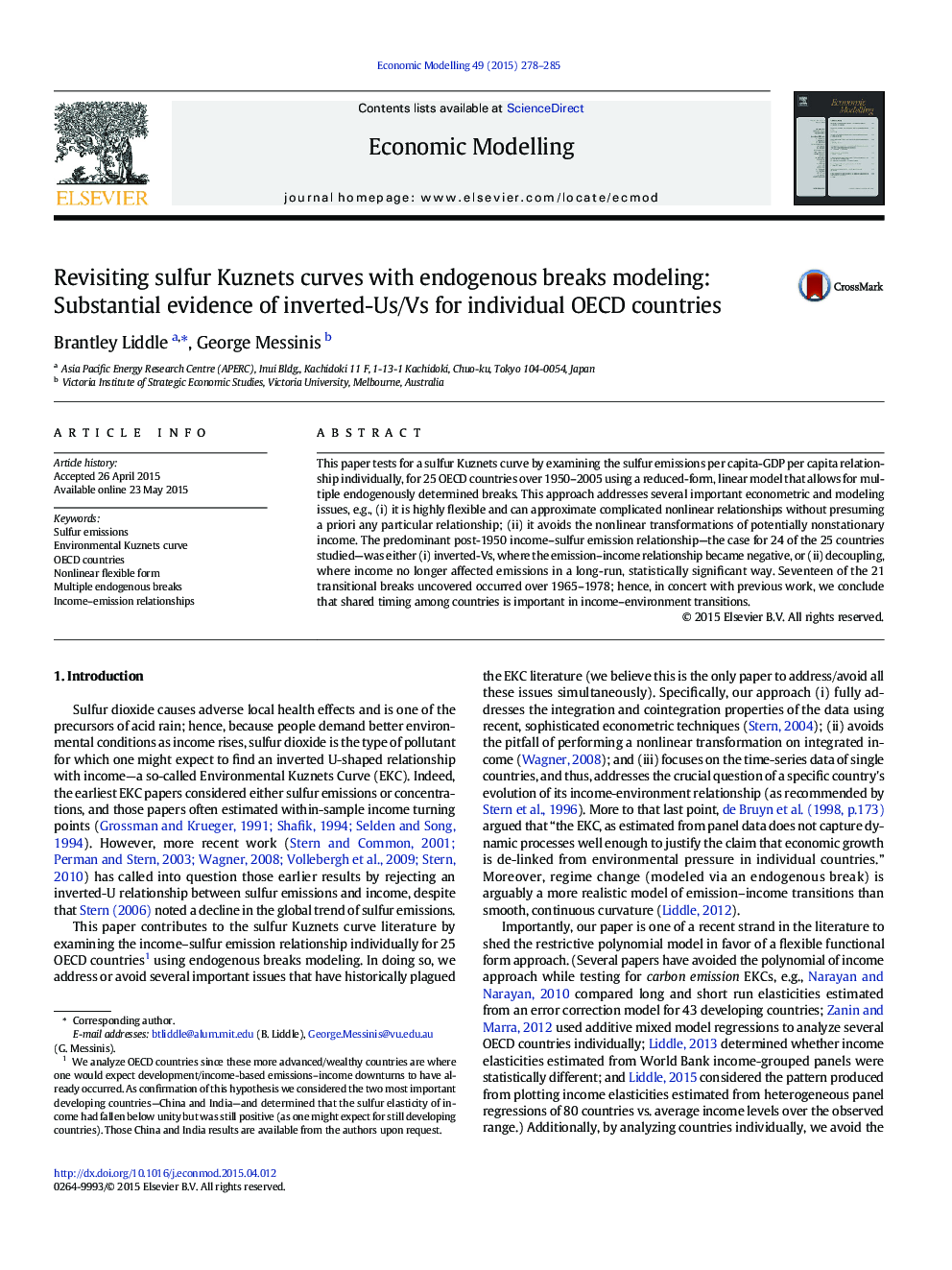| کد مقاله | کد نشریه | سال انتشار | مقاله انگلیسی | نسخه تمام متن |
|---|---|---|---|---|
| 5053831 | 1476519 | 2015 | 8 صفحه PDF | دانلود رایگان |

- We examine sulfur Kuznets curves for OECD countries using endogenous breaks modeling.
- Sulfur Kuznets curves (inverted Us/Vs) were uncovered for 19 of 25 countries.
- Five show decoupling (insignificant relationship or series integrated differently).
- 17 of 21 EKC-type breaks occurred in 1960s or 1970s.
This paper tests for a sulfur Kuznets curve by examining the sulfur emissions per capita-GDP per capita relationship individually, for 25 OECD countries over 1950-2005 using a reduced-form, linear model that allows for multiple endogenously determined breaks. This approach addresses several important econometric and modeling issues, e.g., (i) it is highly flexible and can approximate complicated nonlinear relationships without presuming a priori any particular relationship; (ii) it avoids the nonlinear transformations of potentially nonstationary income. The predominant post-1950 income-sulfur emission relationship-the case for 24 of the 25 countries studied-was either (i) inverted-Vs, where the emission-income relationship became negative, or (ii) decoupling, where income no longer affected emissions in a long-run, statistically significant way. Seventeen of the 21 transitional breaks uncovered occurred over 1965-1978; hence, in concert with previous work, we conclude that shared timing among countries is important in income-environment transitions.
Journal: Economic Modelling - Volume 49, September 2015, Pages 278-285